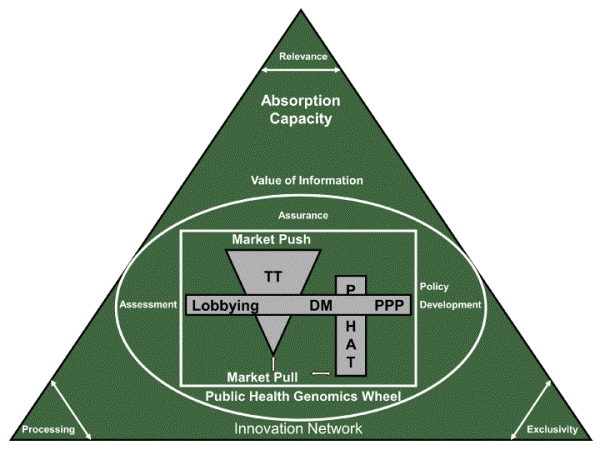
 |
| Figure 1: The Learning-Adapting-Leveling (LAL) model-The LAL model is a framework, which addresses the issue of real-time integration in healthcare systems. The added value of the model is that for the first time it brings together technology transfer and the public health assessment tools in parallel working together by crosstalk (via public-private partnerships or PPPs), giving rise to the innovation network, and in the process adapting the technology to public health and society needs. By the time the technology roles out of the TT pipeline, it is well suited to the conformity of PHAT, and to be taken up by decision makers (DM). This model takes into consideration, the 10 essential tasks of the public health wheel in the form of its 3 domains, namely policy development, assessment and assurance. The model also takes into account the Value of Information from the perspective of the developing technology′s relevance to the end consumer, its processing ability or understandability to the user, and exclusivity like intellectual property rights, which may restrict its wide usage. This (innovation) network through PPPs has an optimal working function called the absorption capacity [29]. |